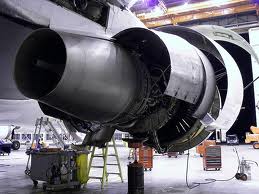Sometimes to implement solutions related to human errors may require substantive changes to the organisational system.
This may require changes to shift working to alleviate the potential of fatigue, or to change how the shift handover is delivered.
Managing error may also be re enforced by the introduction of error tolerance procedures into the working processes, in this way the focus is moved solely from the individual to encompass also the organisational responsibilities.
When we talk about “Error Tolerance” we generally refer to the ability of the system to maintain integrity and continue to deliver even after an error has occurred.
To consider in another way an “Error Tolerant” system is one in which the outcome of an error has a benign effect on the overall system.
Humans have the ability to replace missing or partial information, which whilst in some situations is a positive, it may on other occasions lead to a lack of judgement, where wrong or incorrect decision are made which can be difficult to discover.
Organisational systems must be designed which not only capture errors but which also predict the possibility of such errors occurring. In this way we can preclude the potential of an undesirable event occurring.
Many Errors which occur in an aircraft maintenance environment have their roots in the “Shift Handover”, in fact this is one of the danger points. Implementing multiple defences can have a significant effect in alleviating exposure.
Consider a change in working times to permit better Handovers, developing check-lists which are sympathetic to potential exposure and the implementation of training specifically to promote better communication strategies within the organization.
It is a prime time for error in maintenance, so multiple defences to capture and prevent such errors is important. To minimize miscommunication because of the previous shift wanting to get away, a possible defence could be to have shift times overlap to allow for a more thorough handover; improved check-lists and training/safety communication.
Some general organisational strategies to contain errors (reducing their potential for catastrophic consequences) and prevent errors (trying to avoid them occurring in the first place) are in the table below:
- To address or improve our “exposure” within the organization considers several of the following strategies and behaviours for the containment of maintenance error.
- The support of the CEO is pivotal to delivering an effective MEMS, together with a Policy statement which recognizes that errors are a “normal component” of the maintenance environment.
- The ability of the MEMS to acknowledge the difference – intentional and unintentional errors.
- Recognizing that an effective system requires a continuous input so regular meetings and discussions to identify and document exposures will deliver positive results.
- The ability to analyse and measure risks in whatever manner they are perceived through normal operations as well as through intelligence gathering initiatives.
Training processes which are both formal and informal, for example programs which specifically focus on the need to identify any potential errors which may be task specific, or specific to a series of tasks.
Sofema Aviation Services offers training across a range of Subjects including Maintenance Error Management System, Human Factors and Safety Management Systems. For additional details please see www.sassofia.com or email ofice@sassofia.com
Tags:
Aviation Maintenance Error, Human Factors, Maintenance Error Management System, Safety Management systems, Sofema Aviation Services





